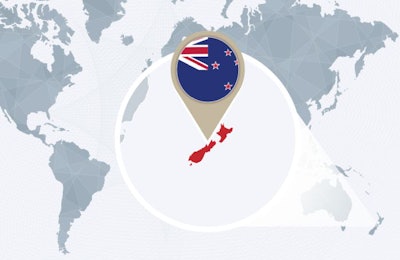
New Zealand’s human population provisionally reached 5 million in March 2020 and pet ownership has increased alongside it, growing the domestic pet food market and increasing opportunities for international companies looking to export pet products to the country.
“New Zealand is a nation of pet lovers,” said the New Zealand Petfood Manufacturers Association (NZPFMA) on its website. In the country, 64% of households own at least one companion animal, with a total pet population of roughly 4.6 million. Over 44% of households own a cat and just over 28% of households own a dog, according to the association.
A January 2019 article on stuff.co.nz, New Zealand’s largest news website, reported that growth of the dog population in New Zealand is actually outstripping human population growth in all major cities apart from Auckland. Dunedin has the highest number of dogs per person, with 17,465 registered dogs for a city population of 130,700. The city of Hamilton has the highest growth in dog ownership, from 6,581 registered dogs in 2012–2013 to 11,783 dogs in 2017–2018 (a 79% rise).
What does New Zealand have to offer pet food importers?
The U.S. is the number one supplier of pet food products to New Zealand (see Table 1), said a May 2020 report from the U.S. Department of Agriculture’s Foreign Agricultural Service (USDA FAS). According to “Strong demand in New Zealand for U.S. pet food,” New Zealand imported a total of US$120 million in pet food in 2019 (and is the seventh-largest market for U.S. pet food), and the overall trends seen in the country’s market are similar to those in other Western markets, including organic, natural and gluten-free pet foods, as well as convenient packaging.
“New Zealand consumers are not as price sensitive as they once were when it comes to their pets,” said the report. “Current trends in the market have seen exporters shift their product range to a higher-end, pouch-packet offering. Also, products that are vegan or contain perceived natural products are desirable. More of these product types have found their way into the New Zealand market, so companies that specialize in these products would do well in New Zealand.”
Supermarkets hold the majority (87%) of the pet food market share in New Zealand, pushing out 31,353 metric tons of cat food and 40,189 metric tons of dog food, according to the NZPFMA. Within those numbers, treats appear to be growing most strongly, currently making up 6.6% of the cat food market and 18.6% of the dog food market.
Of course, it’s not just about the contents of the pet food bags.
“Packaging design is very important, and all pet food packages in New Zealand are designed to show the consumers that products are real, natural, safe and good for the environment,” said the USDA FAS report.
Challenges in entering the New Zealand pet food market
New Zealand’s location provides perhaps the most prohibitive challenge in importing pet food products to the country. While the U.S. is first on New Zealand’s import list, Australia comes in a close second, largely due to its close proximity to the other country.
In addition, New Zealand’s pet food requirements are strict — any pet food manufacturer looking to do business there will need to meet stringent biosecurity requirements as well as compliance with the Agricultural Compounds and Veterinary Medicines Act (ACVM), which affects health claims and labeling requirements.
Of course, the market’s small size, no matter how quickly growing, compared to some other options may very well deter some companies from trying to do business in New Zealand. Although premium trends have caught the eyes of New Zealand pet parents, and both imports and exports of pet food in the country show healthy growth since 2015 (pet food exports have actually doubled between 2015 and 2019, according to the YSDA FAS report), a human population of 5 million does have its limits.
Still, pet owners in New Zealand are willing to pay for perceived benefits to their pets.
“These pets are more than animals sharing our homes,” said the NZPFMA, “they are viewed as members of the family and valued companions.”
















